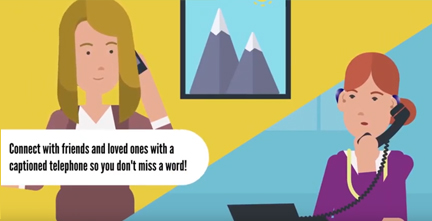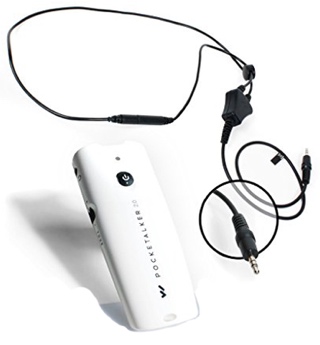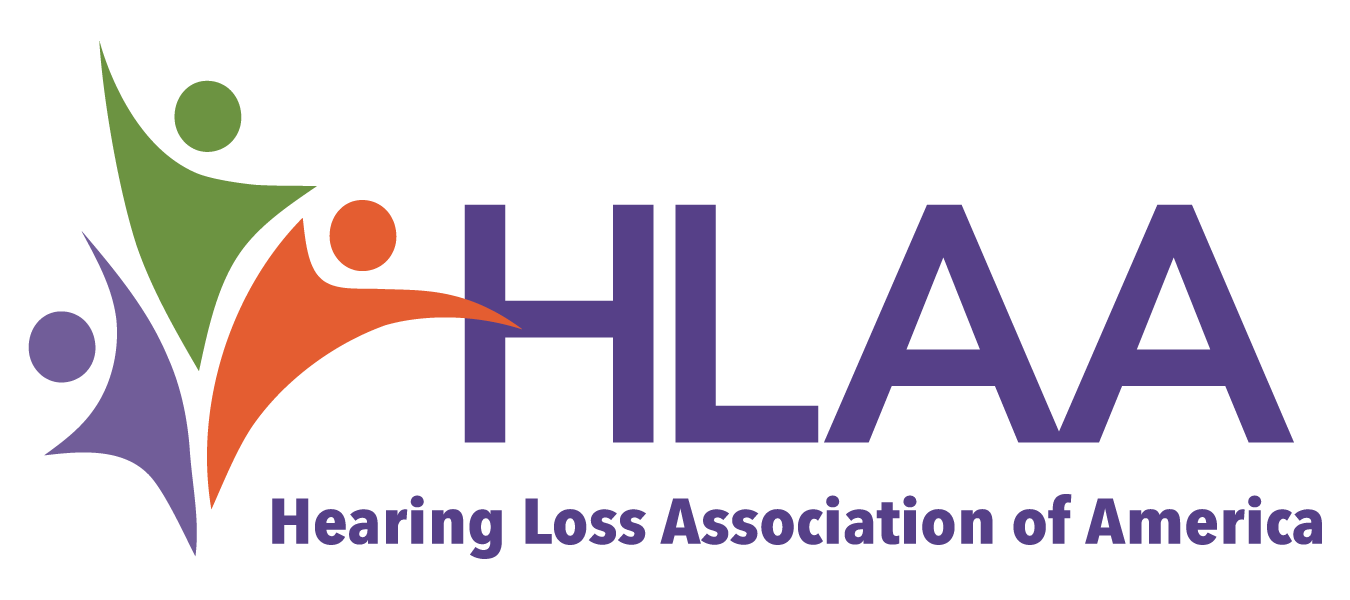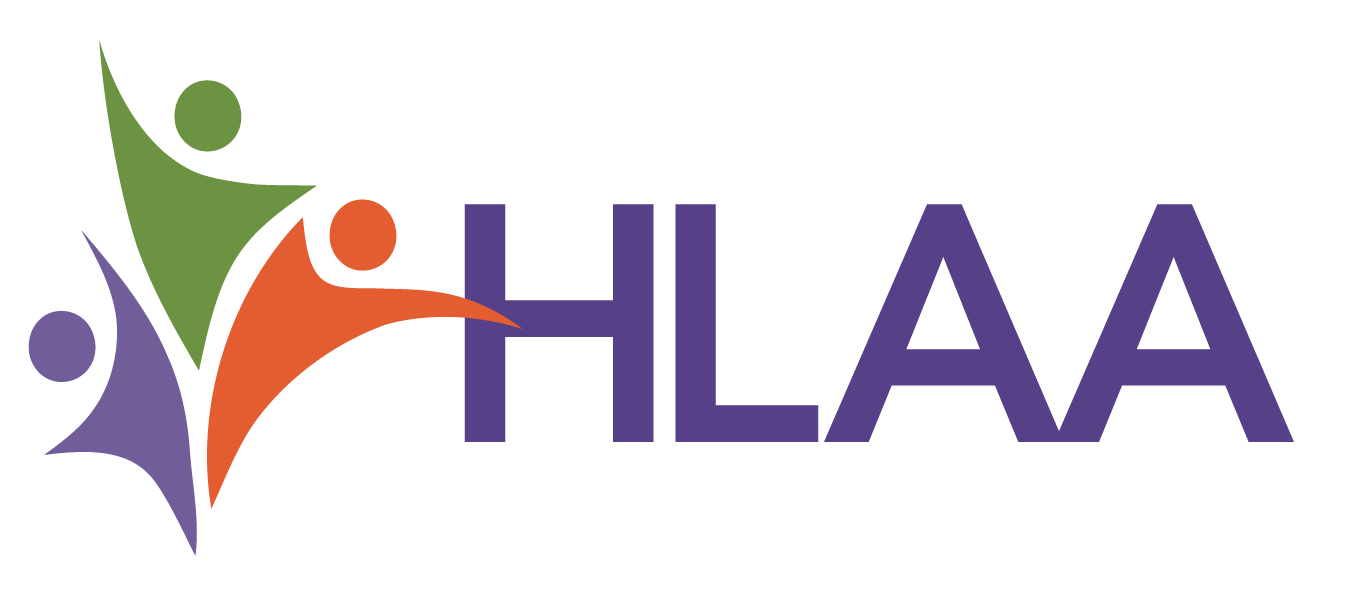Understanding Hearing Assistive Technology (HAT)
People with hearing loss have difficulty hearing and understanding speech. Despite significant advances in hearing aids and cochlear implants, these devices are frequently not enough to enable users to hear and understand what is being communicated in different settings.
Why? Because, for many of us, turning up the volume isn’t enough. Even with the latest technology, hearing aids have a limited effective range, basically amplify almost all sound, and usually can’t separate the background noise from the voices and sounds you want to hear.
In addition to noise, distance and environment affect hearing ability. The farther hearing aid microphones are from what you want to hear, the less likely you will be able to hear and understand. Similarly, open areas, bare walls and floors, high ceilings, and floors and walls with many angles all contribute to poor acoustic conditions and what is called reverberation.
The good news is that there are hearing assistive technologies (HAT) that can readily enable communities to become more hearing friendly.
Technology for Leisure Time Video
 Every day 10,000 Baby Boomers turn 65 and for some people, that means retirement and more time to do other activities. In this video, learn how hearing assistive technology can help you stay active in your community and with friends and family. The video is produced by the Hearing Loss Association of America and made possible by a grant from the Consumer Technology Association Foundation.
Every day 10,000 Baby Boomers turn 65 and for some people, that means retirement and more time to do other activities. In this video, learn how hearing assistive technology can help you stay active in your community and with friends and family. The video is produced by the Hearing Loss Association of America and made possible by a grant from the Consumer Technology Association Foundation.
See more videos on Hearing Assistive Technology.
Improve Your Life
Hearing aids and cochlear implants are often insufficient in public spaces such as auditoriums, places of worship, conference rooms, theaters, concert halls, airports, restaurants, transportation hubs, pharmacy counters, bank teller windows, customer service desks and more.
Hearing Assistive Technology (HAT) can dramatically improve the lives of people with hearing loss. Assistive listening systems and devices bridge the gap between you and the sound source by eliminating the effects of distance, background noise, and reverberation. They can bypass challenging acoustics—sending sound directly to users’ ears.
The American with Disabilities Act (ADA), adopted in 1990, recognizes the difficulty for people with hearing loss to understand in public places and mandates the requirement for assistive listening technology. In 2010 the rules were amended to require hearing aid compatibility so that people with hearing aids and cochlear implants need not remove their devices.
These accommodations are provided free to the listener. And although required, accommodations often need to be requested. For assistance, please view and download:
Requesting Hearing Accommodation at a Public Venue
Requesting Hearing Accommodation in the Workplace published by the Job Accommodation Network (JAN)
Hear Better in Public Places
Assistive Listening Systems are the gateway through which people with hearing loss access the sound being transmitted through a public address system or sound system. If a person wants to conveniently connect to one of these systems, it is imperative their hearing device have a telecoil.
Ask Your Hearing Care Provider About Telecoils
Telecoils expand the usefulness of hearing aids and cochlear implants, especially in environments where it is typically challenging to hear clearly. Telecoils, also called t-coils, are built into many hearing aids, all cochlear implants, and some streamers. T-coils are an essential component for anyone wishing to easily and directly access an assistive listening system.
Hearing aids with a telecoil can make a dramatic difference in the user’s ability to hear clearly on the telephone, in meetings, a noisy restaurant, at the theater, and while navigating buses, airports, train stations and other challenging environments.
Hearing aid users often report being unsure if their hearing aids contain a telecoil program, and if their telecoil program has been activated. They also report they are frequently not informed they can have more than one telecoil program to use in different situations. Make sure to ask your hearing care provider to confirm that the hearing aids you are purchasing have telecoils and that they are programmed and activated.
Help for People Without a Hearing Aid or Telecoil Program
Non-hearing aid users and people without a telecoil in their hearing aids can also use a hearing loop, FM, or infrared (IR) system via a receiver and headphones. You can also use a telecoil-equipped personal amplifier or special telecoil equipped earbuds and a smartphone.
Three Types of Assistive Listening Systems Provide ADA-Mandated Communication Access in Public Areas
Hearing Loops • Infrared • FM Systems
All assistive listening systems are required to be accessible for people with hearing aids or cochlear implants with or without telecoils and for people without hearing aids or cochlear implants.
- Hearing Loops, also known as Induction Loops or Audio Frequency Induction Loop Systems (AFILS), consist of a copper wire placed within a room, theater, or counter which is connected via a special loop “driver” to a public address or sound system. An electromagnetic field is created that connects to a telecoil in hearing aids, cochlear implants, or telecoil receivers. Loops are the most user-friendly of assistive listening options. Hearing loops are simple, discreet, and effective. Users simply switch their devices to the telecoil program and automatically receive clear, customized sound directly to their ears. People who do not have hearing aids or who do not have access to telecoils in their hearing aids or streamer need to use a hearing loop receiver and headphone to connect to the system. For more information, and useful hearing loop resources, go to our Hearing Loop Technology and Get in the Hearing Loop pages.
- Infrared Systems (IR) work like TV remote controls. A transmitter sends speech or music from a public address or sound system to an IR receiver using invisible infrared light waves. This technology is line-of-sight and cannot be used outdoors during the daytime due to being affected by light. Because IR signals are sent and received in a straight line, users are encouraged to sit as centrally as possible; those sitting in balconies or other areas with poor sight lines may experience interference or receive no sound signal at all. Everyone using the IR system needs a receiver and either a headphone or a neck loop. For those who have telecoil-equipped hearing aids and cochlear implants, neck loops eliminate the need for headphones.
- FM Systems, or Radio Frequency Assistive Listening Systems, transmit wireless, low power FM frequency radio transmission from a sound system to FM receivers. An advantage of this system over an infrared system: FM is not affected by direct sunlight. Everyone using the system needs a receiver and either a headphone or a neck loop. For those who have telecoil-equipped hearing aids and cochlear implants, neck loops eliminate the need for headphones.
Hear Better in Conversations
Assistive Listening Devices (ALDs) are personal technologies that can help you communicate in one-to-one conversations. They are hand-held amplifiers with microphones that bring the sound you wish to hear closer to your ears. These small devices capture the sound you want to hear and may filter some background noise. A Pocketalker is an inexpensive example of this type of device. There are also more costly devices, such as a Roger Pen, sold by audiologists as ancillary equipment to various brands of hearing aid and cochlear implants.

An example of how you might use this type of device is communicating with a grandchild at a large family gathering. Your grandchild speaks into the microphone, and the sound is transmitted to your hearing device reducing competing noise, so you can understand them more clearly.
Hear Better When Listening to Your Devices
Bluetooth is a relatively short range wireless technology frequently used to connect cell phones, televisions, computers, tablets and, recently, hearing aids and cochlear implants. Hearing device Bluetooth technology is sometimes proprietary—that is, designed for a specific brand and/or model of device. While this technology is evolving, it is still generally not suited for long range transmission in a large venue like an auditorium or theater.
Communication Access Realtime Translation (CART) and Realtime Captioning
Captioning is the text of the audio portion of a video or film displayed directly on the video or film, often on the bottom of the screen. This may include not only the words, but the sounds that are important to understand and the source of the sound. Open captions cannot be turned off; closed captions are not visible unless they are decoded and turned on for display.
CART is verbatim text of spoken presentations provided for live events. Only the text is provided on a computer screen or projected for display on a larger screen. CART may be provided in the classroom, at meetings, workshops and other presentations including live theater – anywhere that someone with a hearing loss needs to hear in a group setting.
Understanding speech may require using more than one technology; sometimes people with hearing loss need CART in addition to an assistive listening system. Combining assistive technology with CART can provide the best experience—improving both sound clarity and understanding.
CART is an auxiliary service that can be provided, on location or remotely, in which spoken words are converted to text by specially trained providers. The text can be projected onto a screen, displayed on a computer monitor or laptop, or transmitted via the internet. Event and venue managers and people who need CART should be aware that CART can be combined with a PowerPoint or other presentation content—enabling people to view all content on one screen.
Effective CART depends on the skill of the provider and their ability to hear what is said by every speaker. Special attention must be paid to the meeting site, the location of the provider in the room, the size and positioning of the screen on which captions will appear, and the behavior of the speakers. In the case of remote CART, a designated person onsite during the meeting should be available to troubleshoot technical difficulties if they arise.
See more information on the Captioning and CART page.

